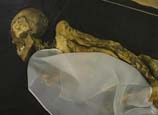
 |
| Ju jiu (Photo/Xinhua) |
A SERIES of online postings vividly illustrating animals and plants mentioned in the Chinese classic "Shi Jing," or "Book of Odes," are among the top hits/clicks on Baidu Tieba, a popular online community platform.
Since last Tuesday, Internet user "Yi Ya Yuan Xian Ren" has posted drawings of more than 100 animals and plants, as well as Chinese explanations and phonetic notations for rare words.
Users praised the posts, saying they enriched readers' knowledge of the classic and motivated them to reread and use it to teach their children about animals and plants.
One posting concerns fu yi (芣苢), commonly known as che qian cao (车前草) or plantain, a fruit in the banana family.
Its sweet seeds are considered to contain yin or cold energy and are frequently used in traditional Chinese medicine as a diuretic and to treat edema and swelling, diarrhea caused by summer heat, cough and asthma caused by accumulated phlegm.
Hong hu (鸿鹄), often used in ancient writing to symbolize ambition, is a white swan that soars high with its large wings. Ju jiu (雎鸠), mentioned in a popular love ode, is an osprey.
Mating birds
Posted pictures show that during courtship the male osprey often swoops down to catch big fish for the female, demonstrating its strength and desirability as a mate, while the female flaps its wings and they soars toward the sky with the male.
The birds are so territorial that one pair of osprey will dominate a small pond.
Thus, the verse "Guan-guan go the ospreys, On the islet in the river" is a metaphor of happily ever after.
The ode of "Gu Ju" or "Guan-guan osprey" is said to be the first written love poem in Chinese.
The "Book of Odes" contains an estimated 100 kinds of animals mentioned in more than 300 odes.
The book is the earliest known collection of odes in Chinese history and contains verse written over 500 years between the early Western Zhou Dynasty (11th century-771 BC) to the middle of Spring and Autumn Period (770-476 BC).
The odes include folk songs from 15 regions, 105 court songs and 40 ritual songs.














 Bullet train attendants receive trainings in China's Shenyang
Bullet train attendants receive trainings in China's Shenyang


![]()
